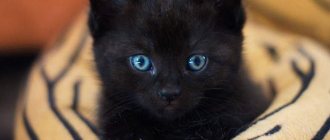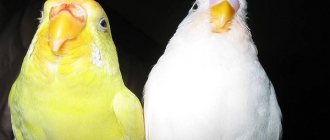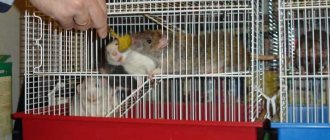Rats make fantastic pets for a variety of reasons - not the least of which is that they are adorable, intelligent and love to interact with people. However, there is one potential downside that puts some owners off: While rats have a sweet and friendly personality that you can fall in love with, they don't live long compared to other animals.
What life expectancy should you expect from pet rats, and how can you determine the age of a rat? In this article we will reveal the answers to these questions.
Lifespan
Experts say: the average age of a decorative rat is 1.5-2 years. With good care and the absence of pathologies, individuals can live up to 4 years. But if an animal survives its 4th birthday, then this is considered a unique case in nature. Therefore, the owners’ claims that their pets lived to the age of five are very doubtful. Moreover, there are no officially registered animals at this age.
The lifespan of pets is influenced by their living conditions. Rats experience stress from the noise of household appliances, and they are negatively affected by cigarette smoke. The main factors that reduce the life expectancy of animals are improper feeding and lack of attention to the pet.
What factors does it depend on?
Experienced breeders know how long rats will live at home - this largely depends on the pedigree of the animals. In other words, the lifespan of a house mouse is directly related to genetics.
If parents are sick, they will not have healthy children. Weak children are also born from close relatives. These children live short lives and often get sick. Only healthy animals with the desired coat pattern and color are selected for crossing.
Accordingly, in order for pet rats to please their owners for a long time, it is advisable to purchase them in kindergartens, where specialists monitor the reproduction and treatment of their charges.
In addition to the child’s pedigree, future nursery owners will be told how to care for them, what they can and should be fed, what vaccinations they received and what needs to be done.
A healthy and rich diet for your pet will also ensure a long and happy life. Human food and junk food can cause illness and premature death in an animal.
Do not spoil your pet with chips, sweets and other similar treats.
The living conditions of pets are very important, so it is necessary to provide rats with everything they need.
Comparison with human age
Rats grow very quickly. It is believed that at one and a half months the cubs already reach maturity. The child's body is formed before this period of approximately 12.5 years.
Article on the topic: Keeping two guinea pigs together: how to introduce them and what to do in case of fights
The period of social maturation in rats, which is characterized by complete independence, ends at six months. By human standards, this is comparable to a child reaching adulthood.
A rat's age of 1 year is approximately 30 years in human years. In the future, each month of a pet’s life can be roughly equated to 2.5 years. For example, a three-year-old pet reaches the age of 90 years by human standards.
Attention! Menopause in females occurs at 15-18 months, which corresponds to a human age of 48-55 years. This means that offspring no longer appear after this period.
Growth rate
Changes in little rat pups are observed daily:
- On the 3rd day the ears appear.
- Teeth appear on days 8-10.
- After 2 weeks, the nipples of females become visible.
- In the third week, the eyes open and the body becomes covered with fur.
The period of childhood in animals is very short, which is confirmed by the following:
- Within 10 days, the pups grow to the size of an adult mouse.
- After a little more than three weeks, the animals begin to feed on their own.
- After 30 days, the cubs leave the parental nest.
Subsequently, the rats grow until the age of 6 months. After this, they gradually mature and reach their maximum size at about a year.
Distinctive features of a young rat
To approximate the age of a rat, you need to weigh it. At the same time, the weight of the male and female is different. When purchasing a pet, you can approximately determine its age, taking into account fixed weight parameters. For the female they are:
- At 2 months 150-200 g.
- At 3 months 210-250 g.
- At 4 months 260-290 g.
- At 5 months 300-340 g.
When choosing a male, the basic weight indicators change upward:
- At 2 months 160-220 g.
- At 3 months 230-310 g.
- At 4 months 320-410 g.
- At 5 months 420-490 g.
Differences between old individuals
After six months, difficulties arise in determining the age of the animal during the weighing process. To do this, you need to take into account various external characteristics. You should pay attention to the length of the animal’s tail. If it is equal to the length of the body, then the animal is definitely more than a year old.
Article on the topic: Is it worth getting a guinea pig: the pros and cons of keeping an animal
In addition, the following signs indicate maturity:
- Dull and sparse fur, sticking out in some places.
- Rough skin on the tail with a large number of keratinized flaking areas.
- A hunched body, indicating the absence of a fatty layer on the back, which is always present in young individuals.
- Long incisors with ground back.
Grooming
They constantly need to comb their white fur, and they also need to be washed constantly. To comb the rodent, use a toothbrush, and be sure to have a soft one. While combing, you will have to hold the rodent with your thumbs and forefingers.
If you find yellowness in your pet's fur, then this is a reason to worry. It is possible that your rat is sick and is unable to care for itself.
Important! You should not risk the animal's psyche if you decide to clean the fur by washing it in a basin. You can simply wet cotton pads and wipe your pet's fur
After the procedure, you need to wipe the rodent dry.
Place the cage with the animal away from direct sunlight, as white rats are afraid of bright sunlight.
Increased life expectancy
You can extend your pet's life with proper care. The animal should have a spacious cage. It should provide for the presence of all the necessary accessories to maintain his physical activity in order to prevent muscle atrophy. These are ladders, a running ring, shelves, etc. It is important to remember that rats are social animals that require increased attention and care.
In addition, emerging diseases should be treated promptly to prevent the development of chronic pathologies. To do this, if there is any change in your pet’s behavior, you should visit a veterinary clinic that has a veterinarian on staff. He will diagnose and prescribe the correct treatment.
Rats are interesting pets that can become true friends. They are quite comparable to cats and dogs. The only thing that upsets many animal lovers is the short life of pets.
How to extend the life of a pet?
The lifespan of a decorative rat largely depends on nutrition. The following expert tips will help you create the right diet for your pet:
- It is unacceptable to feed rats in large portions - this can lead to obesity and rapid death of the animal.
- Food for pet mice should be rich in antioxidants: the presence of free radicals in the body contributes to the development of diseases and accelerates the aging process.
- When purchasing food, you should only choose food that is specifically made for mice.
Another important factor is care and attention. Rats do not like high temperatures or cold, so it is necessary to install a house for them in a warm, dry room, without drafts, but away from radiators or heating devices. The house itself should be large enough to allow its occupant enough space to move around.
If the TV is often on in the room or people listen to music, it is better to move the rat house to another warm but quiet room. Rats do not like the frequent presence of strangers or animals.
Communication is no less important for mice: in nature, rodents live in groups, so they have difficulty withstanding loneliness. It is better to buy not just one pet, but two or three, so that they can communicate not only with people, but also with their fellow creatures.
Little rats. Development and rearing of rat pups
1 period
Rats are born naked, blind, with closed ears, undeveloped limbs and a short tail. Body weight ranges from 4.0 to 6.5 g. They are helpless. All that baby rats can do during the first hours of life is suck. But they suck actively and grow quickly. The weight of a newborn animal reaches 3-6 g, depending on the number of individuals in the litter. Rat cubs grow and develop somewhat slower than hamsters. During the first days, the cubs cannot be handled; they can only be examined visually. Newborn rat pups feed on mother's milk, which contains 8.7% protein, 9.3% fat and 3.7% lactose (in human milk the protein content is 1.6%, fat - 3.3%, lactose - 6, 8%).
Article on the topic: How to determine the gender of a guinea pig at home (photo) - learning to distinguish girls from boys
2nd period
Newborns' ears open on the third or fourth day after birth. On the fourth to sixth day, they develop a soft coat. On days 8-10, rat pups begin to teethe. By 10 days of age, the cubs' lower incisors have erupted. Molars appear later, 19-40 days after birth.
3rd period
Eye opening occurs on the 14th-17th day. To establish sex and examine the cubs at the end of the second week, they can be removed from the nest for a short time in the absence of the female. At this time, sex can only be determined by the presence of nipples in females, because the testicles of males still lie in the abdominal cavity and are not visible. Cubs are most active at the age of 8-20 days, but at this time great care is required in handling them, since their actions are not yet fully coordinated and they may fall to the floor. By day 16, the pups are completely covered with hair. In the second week of life, newborn females develop breast nipples. They are absent in newborns.
4th period
By day 21, the pups leave the nest and begin to eat food from the feeder. At the age of 25-28 days, the rat pups are placed in separate cages. Young rats require not only their mother's milk, but also contact with their mother, which gives them experience, security and warmth. Young rats that are sold too early remain small and get sick more quickly. It is possible to separate cubs from their mother at an age when they have reached, for example, the size of a large house mouse.
The growth of rats, which lasts 11-12 months, is influenced by many factors, but the main one, of course, is nutrition, which should be mixed and varied. Feeding young animals follows the same principle as adults, but fresh greens, sprouted wheat grains, fish oil and animal feed should be added to the diet. To create friendly relations with baby rats, you need to pick them up more often in the absence of the female, starting from a very early age.
Article on the topic: How to determine the age of a guinea pig at home by signs
Thus, within three weeks, animals ready for independent life grow from defenseless naked lumps. The intensive growth of rat pups requires careful adherence to the feeding and maintenance standards of their mothers. During the suckling period, females should receive plenty of fluids and adequate feeding with sufficient protein, mineral salts and vitamins. Rats, as well as other small rodents, are characterized by different growth of individual parts of the body. The limbs and ears finish growing first - by the time they leave the nest they reach the sizes characteristic of adult animals. The tail takes a little longer to grow. By one and a half months, the weight indicators of the internal organs and brain have stabilized. By this time, the reproductive organs of females and males are finally formed, and already at the age of 5-7 weeks a young female can become pregnant, which is extremely undesirable for such a young creature.
The growth of rodents is greatly influenced by the level of feeding. With severe protein starvation, rat pups grow more slowly and mortality increases. Such animals give poor offspring in the future. Clean water should always be in drinking bowls - lack of drinking for a long time negatively affects the health of animals and their offspring. Young rodents need more food. With an animal weighing 10-14 g, the amount of food it eats per day is on average 70-80% of its body weight, and in some cases it can reach 100% or more. With age, young animals gain weight, and their need for feed changes accordingly.
Healthy foods
for baby rats 1-3 months: Cottage cheese, boiled chicken bones, boiled fish, apples, bananas, milky corn.
Should be limited
: broccoli, lettuce, boiled liver, yeast, egg yolk.
Harmful products
: champignons, tomatoes, cucumbers
Rodent anatomy
The animals have a stocky build and an oval body shape. The size of an adult individual can be 8–30 cm in length. Body weight is 37–420 g. Some individuals weigh more than 500 g.
Many people wonder how many fingers rats have. The animals' front paws resemble human hands, but each has 4 fingers. The fifth (large) has a reduced shape, looks like a short stump with a blunt end. There are 5 toes on the hind legs.
How many teeth do rats have? There are a total of 4 incisors and 12 molars. The former are constantly growing, so animals have to regularly grind them down on various objects and materials.
If the rodent does not do this, the incisors will soon grow, preventing the mouth from closing normally. This causes severe discomfort, so when keeping pets at home, it is necessary to give wooden blocks and branches to your pets. Then the animal will be healthy and calm.
The structure of the rat has its own distinctive features:
- normal body temperature: +37.5ºС - +38.3ºС;
- heart rate per minute: 300 – 500;
- number of breaths per minute: 85 – 100;
- with a weight of 400 g, the animal’s brain is 2 g;
- puberty occurs after 8 weeks of age;
- pregnancy lasts up to 24 days.
Physiology is designed so that rats can survive in a variety of conditions:
- eyes. They allow you to see well around you, but not those objects that are very close. Animals have difficulty viewing stationary objects.
- Ears. Rodents have excellent hearing. The ears can move in different directions, independently of each other.
- Nose. Compared to humans, rats perceive a wider range of aromas. This allows her to identify strangers by smell and recognize the marks of other animals.
- Taste buds. They detect the quality of food even if there is a subtle aftertaste.
- Vibrissae. Helps with orientation in the dark.
The animals have a well-developed sense of heights, so they can calmly rest even on tight ropes.
Age of a rat by human standards
Today it is customary to “project” the age of animals onto humans by comparing them. This diagram is very approximate, but may be useful for pet owners.
During childhood, animals grow extremely quickly. At the age of 6 weeks (one and a half months), the animals become sexually mature. In humans, this is observed by the age of 12.5 years. In both cases, fertilization of adolescents who have not yet fully formed is extremely undesirable.
It is very harmful to parents who are not ready to bear children. The offspring will not have full health.
At 5-6 months the animal matures. It is ready to reproduce its own kind without harm to health; by human standards, this is 18 years of age.
From this moment on, the age of the rat can be calculated, equating it to that of a human. To do this, use the formula: just multiply the months lived by the rat by 2.5. The result is a figure indicating the approximate corresponding human age.
A one-year-old animal will be “humanly” 30 years old (12*2.5=30). The formula calculates that the age of a one and a half year old is 45 years, a two year old is 60, a three year old is 90, and a four year old is 120.
Important! Menopause in rats occurs at 15-18 months, which corresponds to 48-55 human years. Having reached this period, the female is rarely able to bear offspring.
How many years do rats live in nature and at home?
Every novice breeder should be prepared for the fact that decorative rats do not live long. Therefore, before getting a small rodent as a pet, it is worth weighing the pros and cons several times.
At the genetic level, the life expectancy of wild and domestic rats is the same, and is about 3 years. However, in practice, pasyuki live much shorter - on average up to one and a half years. The decrease in life expectancy of wild rodents is associated with living in unsanitary conditions, attacks by predators and advanced cannibalism (in the absence of other food sources).
At home, with proper care (kept clean, properly selected diet, timely treatment), decorative rats can easily live up to 2.5-3 years. However, among fluffies there are long-livers who have lived up to 4 years.











